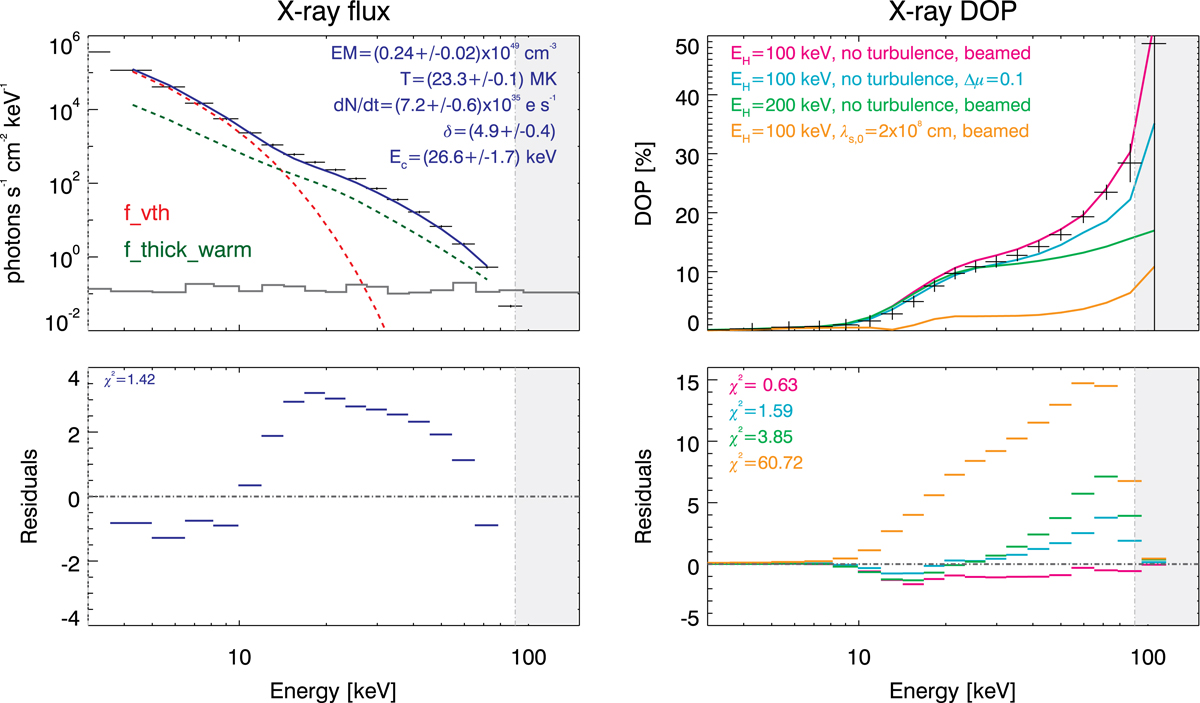Fig. 5.

Example of how the X-ray flux and DOP spectra can be used together to estimate the properties of the accelerated electron distribution. Applying the warm target function (f_thick_warm in OSPEX) to the X-ray flux helps to constrain the coronal plasma properties and the following acceleration parameters: low energy cutoff Ec, the spectral index δ and the rate of acceleration Ṅ. Ignoring any other transport mechanisms, and once constrained, the resulting X-ray DOP spectra should only be dependent upon the high energy cutoff EH and acceleration anisotropy Δμ, and turbulent scattering (using λs, 0), if present. Top panels: (left) the “flux data” (black) and the resulting f_vth+f_thick_warm fits to the X-ray flux spectrum (red and green respectively, this also contains an albedo component not shown), and (right) the “DOP data” (black) and four simulation runs using the constrained properties from the X-ray flux spectra and the values of EH, Δμ and λs, 0 shown. Bottom panels: residuals and resulting reduced χ2 for each fit. Both the X-ray flux and DOP are fitted between 3 and 90 keV (grey dash-dot line).
Current usage metrics show cumulative count of Article Views (full-text article views including HTML views, PDF and ePub downloads, according to the available data) and Abstracts Views on Vision4Press platform.
Data correspond to usage on the plateform after 2015. The current usage metrics is available 48-96 hours after online publication and is updated daily on week days.
Initial download of the metrics may take a while.


